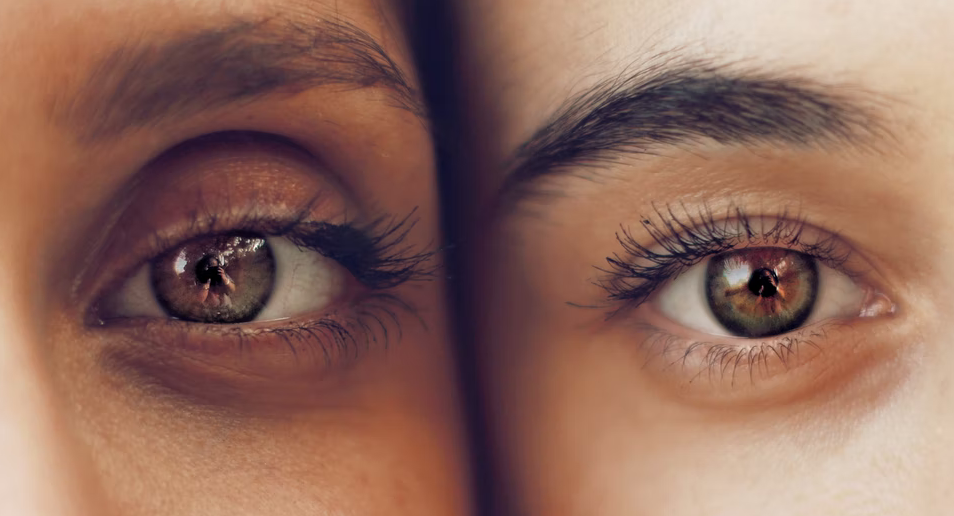Recently, we’ve begun to spend more time in front of our monitors. Leisure options have decreased significantly – walking has been replaced with Netflix series. In short, eye strain has increased, and eye fatigue is affecting our overall condition. In general, eye yoga has become a major wellness trend today! Here’s where you should start.

Palming
Sit flat on a chair and relax. Cover your right eye with the palm of your right hand. Do the same with the left eye. Lightly touch the face with your hands so that the eye is in the middle of the palm. The fingers of the left and right hands can lie parallel or cross each other on the forehead, the main thing is that it is comfortable for the child. It is important that there are no gaps between the fingers and the light does not fall under the palm. When everything is done correctly, it is necessary to lower the eyelids.
Without removing your hands and without opening the eyelids, you should put your elbows on the table, trying to keep the spine and neck in line. There should be no tension in the body. Your breathing should be even and calm. Don’t try to keep the situation under control or intentionally relax your eyes-it’s impossible. Relaxation comes when the body is completely ready. If possible, before you start your workout, put on some pleasant, calm music and think about something that gives you pleasure.
Nose Writing
This exercise helps relax your eye muscles and the muscles of the cervical region. If this area is severely strained, circulation is impaired and oxygen supply to the eyes is reduced.
Get into a comfortable position where you can relax. Imagine that your nose has turned into a pencil. There is a white sheet of paper in front of you, which you can draw or paint as you see fit. What exactly you should write depends only on your imagination: a letter to mom or just a set of letters, simple geometric shapes, a house with smoke coming from a chimney or a full-fledged picture. The main task is to allow the nose to “write,” while keeping the facial muscles and eyes relaxed.
To complete this exercise in the office or on public transport without attracting the attention of others, reduce the area for painting. For example, imagine that you are writing with a thin needle on a pinhead. In this case, the amplitude of movements will be reduced, but the effect will remain the same.
You can perform the training in any convenient position, but the greatest effect will be achieved by doing the exercises sitting down. The duration of the training is 7-8 minutes.
Through Your Fingers
Eye strain is often associated with increased concentration. This exercise allows the eyes to rest by rapidly changing the picture.
Hands should be bent at the elbow joints and placed in front of the face so that the palms are slightly below the eyes. Open your fingers so that you can see through them. Then make smooth turns of the head from side to side, leaving the hands motionless. Breathe calmly, evenly. The gaze is directed into the distance, and it should not linger on any object. When the exercise is done correctly, it seems that it’s not the head, and his hands are moving.
Perform three turns with the eyes open, then the same amount with the eyes closed. One exercise should be 20-30 repetitions.
Not everyone achieves the “hand movement” effect at once. To practice, do the exercise in the other variant: place the straightened index finger in front of the face. Begin the exercise with the eyelids closed. Smoothly turn your head to one side and to the other, so that your nose periodically touches the finger. Then open your eyes, without focusing on any object, look into the distance and continue making turns. Most likely you will notice how the finger “moves” past you.
Conclusion
In conclusion, incorporating eye yoga exercises into your daily routine can greatly benefit your eye health and overall well-being. By practicing palming, eye rolling, and focus shifting regularly, you can relieve eye strain, improve circulation, and promote relaxation for tired eyes. So why wait? Give these effective eye yoga exercises a try today and experience the rejuvenating benefits for yourself!
Remember, your eyes deserve the same care and attention as the rest of your body. Treat them well, and they will thank you with improved vision and comfort. Start practicing these eye yoga exercises today, and say goodbye to eye fatigue for good!
